Computing Sciences Summer Program 2023: Talks & Events
Summer Program Kickoff
Who: Deborah Agarwal & Stefan Wild
When: June 6, time 11 a.m. - 12 p.m.
Where: B50 Auditorium
 Dr. Deborah (Deb) Agarwal's research focuses on scientific tools which enable sharing of scientific experiments, advanced networking infrastructure to support sharing of scientific data, data analysis support infrastructure for eco-science, and cybersecurity infrastructure to secure collaborative environments. Dr. Agarwal is a Research Affiliate at the Berkeley Institute for Data Science and an Inria International Chair, where she co-leads the DALHIS (Data Analysis on Large-scale Heterogeneous Infrastructures for Science) Inria Associate team. Dr. Agarwal also leads teams developing data server infrastructure to significantly enhance data browsing and analysis capabilities and enable eco-science synthesis at the watershed scale to understand hydrologic and conservation questions and at the global scale to understand carbon flux. Some of the projects Dr. Agarwal is working on include Environmental Systems Science Digital Infrastructure for a Virtual Ecosystem (ESS-DIVE), Watershed Function SFA, AmeriFlux Management Project, FLUXNET, NGEE Tropics, International Soil Carbon Network. Dr. Agarwal received her Ph.D. in electrical and computer engineering from the University of California, Santa Barbara, and a B.S. in Mechanical Engineering from Purdue University.
Dr. Deborah (Deb) Agarwal's research focuses on scientific tools which enable sharing of scientific experiments, advanced networking infrastructure to support sharing of scientific data, data analysis support infrastructure for eco-science, and cybersecurity infrastructure to secure collaborative environments. Dr. Agarwal is a Research Affiliate at the Berkeley Institute for Data Science and an Inria International Chair, where she co-leads the DALHIS (Data Analysis on Large-scale Heterogeneous Infrastructures for Science) Inria Associate team. Dr. Agarwal also leads teams developing data server infrastructure to significantly enhance data browsing and analysis capabilities and enable eco-science synthesis at the watershed scale to understand hydrologic and conservation questions and at the global scale to understand carbon flux. Some of the projects Dr. Agarwal is working on include Environmental Systems Science Digital Infrastructure for a Virtual Ecosystem (ESS-DIVE), Watershed Function SFA, AmeriFlux Management Project, FLUXNET, NGEE Tropics, International Soil Carbon Network. Dr. Agarwal received her Ph.D. in electrical and computer engineering from the University of California, Santa Barbara, and a B.S. in Mechanical Engineering from Purdue University.
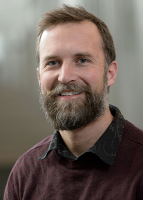 Stefan Wild directs the Applied Mathematics and Computational Research (AMCR) Division in the Computing Sciences Area at Lawrence Berkeley National Laboratory (Berkeley Lab). AMCR conducts research and development in mathematical modeling, simulation and analysis, algorithm design, computer system architecture, and high-performance software implementation. Wild came to Berkeley Lab in December of 2022 from Argonne National Laboratory, where he was a senior computational mathematician and deputy division director of the Mathematics and Computer Science Division.
Stefan Wild directs the Applied Mathematics and Computational Research (AMCR) Division in the Computing Sciences Area at Lawrence Berkeley National Laboratory (Berkeley Lab). AMCR conducts research and development in mathematical modeling, simulation and analysis, algorithm design, computer system architecture, and high-performance software implementation. Wild came to Berkeley Lab in December of 2022 from Argonne National Laboratory, where he was a senior computational mathematician and deputy division director of the Mathematics and Computer Science Division.
NERSC: Scientific Discovery through Computation
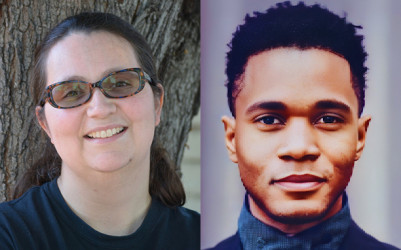
Rebecca Hartman-Baker and Charles Lively
Who: Rebecca Hartman-Baker and Charles Lively
When: June 8, 11 a.m. - 12 p.m.
Where: B59-3101
Abstract: What is High-Performance Computing (and storage!), or HPC? Who uses it and why? We'll talk about these questions as well as what makes a Supercomputer so super and what's so big about scientific Big Data. Finally, we'll discuss the challenges facing system designers and application scientists as we move into the exascale era of HPC.
Bio: Rebecca Hartman-Baker leads the User Engagement Group at NERSC, where she is responsible for engagement with the NERSC user community to increase user productivity via advocacy, support, training, and the provisioning of usable computing environments. She began her career at Oak Ridge National Laboratory, where she worked as a postdoc and then as a scientific computing liaison in the Oak Ridge Leadership Computing Facility. Before joining NERSC in 2015, she worked at the Pawsey Supercomputing Centre in Australia, where she coached two teams to the Student Cluster Competition at the annual Supercomputing conference, led the HPC training program for a time, and was in charge of the decision-making process for determining the architecture of the petascale supercomputer installed there in 2014. Rebecca earned a Ph.D. in Computer Science from the University of Illinois at Urbana-Champaign.
Bio: Charles Lively III, PhD is a Science Engagement Engineer and HPC Consultant in the User Engagement Group (UEG) at the National Energy Research Scientific Computing (NERSC) Center. Charles earned his Ph.D. from Texas A&M University and his research interests are in the area of Performance Modeling and Optimization of large-scale applications and energy-aware computing.
Introduction to NERSC Resources

Yun (Helen) He
Who: Yun (Helen) He
When: June 8, 1 - 2 p.m.
Where: Zoom Only
Abstract: This class will provide an informative overview to acquaint students with the basics of NERSC computational systems and programming environment. Topics include systems overview, connecting to NERSC, software environment, file systems and data management/transfer, and available data analytics software and services. More details on how to compile applications and run jobs on NERSC systems will be presented including hands-on exercises on Perlmutter. The class will also showcase various online resources that are available on NERSC web pages. Training accounts will be provided for students who have not yet set up a NERSC account.
Bio: Dr. Yun (Helen) He is a High Performance Computing Consultant at NERSC, Lawrence Berkeley National Laboratory. She has been the main user focus point of contact for several NERSC flagship Cray systems deployed over the past 15 years and is the NERSC training lead. Helen specializes in the software programming environment, parallel programming models, applications porting and benchmarking, and climate models. Helen has served on the Organizing Committees (including Program Chair for Cray User Group) and given technical presentations for many HPC conference series. She is on the OpenMP Language Committee and has provided tutorials at various HPC venues. Helen has co-authored a book, “OpenMP Common Core: Making OpenMP Simple Again”.
Usable and Integrated Data Systems and Software Engineering for Collaborative Science
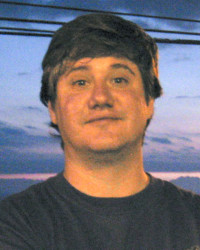
Dan Gunter
Who: Dan Gunter
When: June 13, 11 a.m. - 12 p.m.
Where: B59-3101
Abstract: Software is ubiquitous and is critical to all scientific research, from data collection at experiments or instruments to running large simulations or data analysis on large supercomputers. Scientific software often emerges as an effort to solve a specific need and evolves with the complex and iterative scientific inquiry and needs of the project. This software may include user interfaces, databases and archives, workflow systems, and security models. There is also a need for R&D that can bridge the datasets and tools across projects and domains to support collaborative science. This talk will describe our experiences and approach to efficiently uncover the needs of scientific projects and perform targeted research and engineering to meet those needs, in collaboration with scientists from the Earth Sciences, Chemical Engineering, Biology, Material Science, and Physics.
Bio: Dan Gunter leads the Usable Data Systems (UDS) group in the Scientific Data Division (SciData). Dan's interests include usability for scientific interfaces and workflows, data management and data processing pipelines in heterogeneous environments, software engineering for distributed multidisciplinary scientific teams, and building usable interfaces to enable scientific exploration. He has led software efforts in projects for multiple domains, collaborating with science divisions at LBNL as well as other research institutions in the DOE and academia.
QC and HPC: the Path from the Experimental to Routine Computing
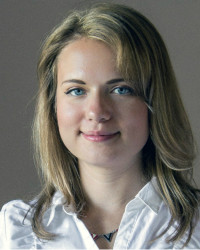
Anastasiia Butko
Who: Anastasiia Butko
When: June 15, 11 a.m. - 12 p.m.
Where: B50 Auditorium
Abstract: Quantum computing is a promising new technologies that can potentially outperform classical machines for various scientific applications. Quantum technologies have dramatically evolved over the past decade, yet it still stays in the area of experimental computing making it challenging for users to adapt for their applications. Moreover, it is unclear how and when quantum accelerators become a part of the larger heterogeneous HPC ecosystem. In this talk, we discuss the path for quantum computing the experimental to routine computing.
Bio: Anastasiia Butko, Ph.D. is a Research Scientist in the Computational Research Division at Lawrence Berkeley National Laboratory (LBNL), CA. Her research interests lie in the general area of computer architecture, with particular emphasis on high-performance computing, emerging and heterogeneous technologies, associated parallel programming and architectural simulation techniques. Broadly, her research addresses the question of how alternative technologies can provide continuing performance scaling in the approaching Post-Moore’s Law era. Her primary research projects include development of the EDA tools for fast superconducting logic design, development of the classical ISA for quantum processor control, development of the fast and flexible System-on-Chip generators using Chisel DSL. Dr. Butko received her Ph.D. in Microelectronics from the University of Montpellier, France (2015). Her doctoral thesis developed fast and accurate simulation techniques for many-core architectures exploration. Her graduate work has been conducted within the European project MontBlanc, which aims to design a new supercomputer architecture using low-power embedded technologies. Dr. Butko received her MSc. Degree in Microelectronics from UM2, France and MSc and BSc Degrees in Digital Electronics from NTUU "KPI", Ukraine. During her Master she participated on the international program of double diploma between Montpellier and Kiev universities.
Panel: Career Paths

(L-R) Panelists Deb Agarwal, Andy Nonaka, and Osman Malik.
Who: Deb Agarwal, Andy Nonaka, and Osman Malik
When: June 21, 3 - 4 p.m.
Where: B59-3101
Abstract: In this panel, participants in the CS Area Summer Program will have a unique opportunity to get to know how three of our staff members arrived at different levels in their careers. Deb Agarwal will share her experiences at the Lab and her path to a leadership position; Andy Nonaka will tell us about his work as a staff scientist and becoming a group leader; and Osman Malik will tell us about his journey to the Lab and being an Alvarez Postdoctoral fellow.
Dr. Deb Agarwal is a Senior Scientist and Division Director for the Scientific Data Division (http://crd.lbl.gov), at Lawrence Berkeley National Laboratory (LBNL). The Scientific Data Division (SciData) transforms data-driven discovery and understanding through the development and application of novel data science methods, technologies, and infrastructures with scientific partners. Dr. Agarwal’s current research focuses on developing computational tools to enable scientists to organize and use Earth Science data to address challenges more effectively. She has worked on projects involving carbon flux, watershed understanding, tropical forests, soil carbon, carbon capture, cosmology, particle accelerators, data repositories, and satellite data. She is also active in efforts to broaden diversity in computing research and a member of the Computing Research Association Committee on Widening Participation.
Andy Nonaka is a Staff Scientist and Group Lead of the Center for Computational Sciences and Engineering (CCSE) at Lawrence Berkeley National Laboratory. He is interested in HPC implementations of multiphysics and multiscale algorithms for PDEs using structured grid, adaptive mesh, particle/grid, and machine learning algorithms.
Osman Malik received his PhD in Applied Mathematics from the University of Colorado Boulder. His research interests are numerical linear algebra, tensor decomposition, randomized algorithms and optimization. He is also interested in the application of these tools in machine learning and scientific computing.
Note: No slides available for this presentation.
High-Order Discontinuous Galerkin Methods for Fluid and Solid Mechanics

Per-Olof Persson
Who: Per-Olaf Persson
When: June 22, 11 a.m. - 12 p.m.
Where: B59-3101
Abstract: It is widely believed that high-order accurate numerical methods, for example discontinuous Galerkin (DG) methods, will eventually replace the traditional low-order methods in the solution of many problems, including fluid flow, solid dynamics, and wave propagation. The talk will give an overview of this field, including the theoretical background of the numerical schemes, the efficient implementation of the methods, and examples of real-world applications. Topics include new numerical schemes, unstructured curved mesh generation, parallel preconditioners for iterative solvers, and fully discrete adjoint methods for optimization. The methods will be demonstrated on some important practical problems, including optimal flapping wings and large eddy simulation (LES) of wind turbines.
Bio: Per-Olof Persson is since 2008 a Professor of Mathematics at the University of California, Berkeley, and a Mathematician Faculty Scientist/Engineer at the Berkeley Lab. Before then, he was an Instructor of Applied Mathematics at the Massachusetts Institute of Technology, from where he also received his PhD in 2005. In his thesis, Persson developed the DistMesh algorithm which is now a widely used unstructured meshing technique for implicit geometries and deforming domains. He has also worked for several years with the development of commercial numerical software, in the finite element package Comsol Multiphysics. His current research interests are in high-order discontinuous Galerkin methods for computational fluid and solid mechanics. He has developed new efficient numerical discretizations, scalable parallel preconditioners and nonlinear solvers, space-time and curved mesh generators, adjoint formulations for optimization, and IMEX schemes for high-order partitioned multiphysics solvers. He has applied his methods to important real-world problems such as the simulation of turbulent flow problems in flapping flight and vertical axis wind-turbines, quality factor predictions for micromechanical resonators, and noise prediction for aeroacoustic phenomena.
Crash Course in Supercomputing

Rebecca Hartman-Baker and Charles Lively
Who: Rebecca Hartman-Baker and Charles Lively
When: June 22, 1 – 5 p.m.
Where: B59-3101
Abstract: In this two-part course, participants will learn to write parallel programs that can be run on a supercomputer. We begin by discussing the concepts of parallelization before introducing MPI and OpenMP, the two leading parallel programming libraries. Finally, participants will put together all the concepts from the class by programming, compiling, and running a parallel code on one of the NERSC supercomputers. Recommend attending AM and PM Sessions.
Bio: Rebecca Hartman-Baker leads the User Engagement Group at NERSC, where she is responsible for engagement with the NERSC user community to increase user productivity via advocacy, support, training, and the provisioning of usable computing environments. She began her career at Oak Ridge National Laboratory, where she worked as a postdoc and then as a scientific computing liaison in the Oak Ridge Leadership Computing Facility. Before joining NERSC in 2015, she worked at the Pawsey Supercomputing Centre in Australia, where she coached two teams to the Student Cluster Competition at the annual Supercomputing conference, led the HPC training program for a time, and was in charge of the decision-making process for determining the architecture of the petascale supercomputer installed there in 2014. Rebecca earned a Ph.D. in Computer Science from the University of Illinois at Urbana-Champaign.
Bio: Charles Lively III, PhD is a Science Engagement Engineer and HPC Consultant in the User Engagement Group (UEG) at the National Energy Research Scientific Computing (NERSC) Center. Charles earned his Ph.D. from Texas A&M University and his research interests are in the area of Performance Modeling and Optimization of large-scale applications and energy-aware computing.
Overview of Research and Developments in Scalable Solvers Group
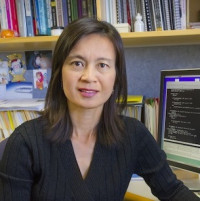
Xiaoye (Sherry) Li
Who: Xiaoye (Sherry) Li
When: June 27, 11 a.m. – 12 p.m.
Where: B59-3101
Abstract: We will highlight various ongoing projects in SSG. They span many areas of numerical linear algebra and high-performance scientific computing. The group members are also actively engaged in many application areas, such as material sciences, computational chemistry, machine learning, and quantum computing.
Bio: Sherry Li is a Senior Scientist in the Applied Mathematics and Computational Research Division, Lawrence Berkeley National Laboratory. She has worked on diverse problems in high-performance scientific computations, including parallel computing, sparse matrix computations, high precision arithmetic, and combinatorial scientific computing. She is the lead developer of SuperLU, a widely-used sparse direct solver, and has contributed to the development of several other mathematical libraries, including ARPREC, LAPACK, PDSLin, STRUMPACK, and XBLAS. She earned a Ph.D. in Computer Science from UC Berkeley and B.S. in Computer Science from Tsinghua Univ. in China. She has served on the editorial boards of the SIAM J. Scientific Comput. and ACM Trans. Math. Software, as well as many program committees of the scientific conferences. She is a SIAM Fellow and an ACM Senior Member.
Designing and Presenting a Science Poster

Jonathan Carter
Who: Jonathan Carter
When: June 28, 11 a.m. – 12 p.m.
Where: B59-3101
Abstract: During the poster session on August 8th, members of our summer visitor program will get the opportunity to showcase the work and research they have been doing this summer. Perhaps some of you have presented posters before, or perhaps not.
This talk will cover the basics of poster presentation: designing an attractive format; how to present your information clearly; what to include and what not to include. Presenting a poster is different from writing a report or giving a presentation. This talk will cover the differences, and suggest ways to avoid common pitfalls and make poster sessions work more effectively for you.
Bio: Jonathan Carter is the Associate Laboratory Director for Computing Sciences at Lawrence Berkeley National Laboratory (Berkeley Lab). The Computing Sciences Area at Berkeley Lab encompasses the National Energy Research Scientific Computing Division (NERSC), the Scientific Networking Division (home to the Energy Sciences Network, ESnet) and the Computational Research Division.
LaTex Workshop

Lipi Gupta
Who: Lipi Gupta
When: June 28, 3 p.m. - 4:30 pm
Where: Zoom Only
Abstract: For participants: This is an interactive activity, and it is encouraged that anyone participating have access to a LaTeX compiler.
Bio: Lipi Gupta defended her Ph. D. in Physics at the University of Chicago in July 2021. She was awarded an Office of Science Graduate Student Research Program award from the US Department of Energy to complete her Ph.D research at the SLAC National Accelerator Lab in Menlo Park, California. At SLAC, Lipi worked on studying how to apply machine learning techniques to improve particle accelerator operation and control. Lipi also has a background in nonlinear beam dynamics, focusing on sextupole magnet resonance elimination, through her research at University of Chicago and research conducted while earning a Bachelor of Arts in Physics with a minor in mathematics at Cornell University.
Securing DoE's Energy Sciences Network

Fatema Wala
Who: Fatema Wala
When: July 19, 11 a.m. - 12 p.m.
Where: 70A-3377
Abstract: This talk is going to deep dive into some of the security processes and methods that we deploy to secure the Department of Energy's Energy Sciences network (ESnet). How we swift through the challenges of the security landscape keeping our technology stack up to date and current. This talk will give an overview on the day of a Security Engineer working for ESnet and experience so far.
Bio: I am a Security Engineer at the Energy Sciences network (ESnet) of DoE, working full time at the Berkeley Lab. I have over 8 years of industry experience working in security and my primary area of expertise is network defense. Apart from being a security engineer, I am a part-time Ph.D. student focusing on security of DNS and it's variants. I am a big advocate of open-source software and also a member of Zeek LT, together with serving on SANS advisory board. I hold a CISSP together with a few other GIAC certifications.
How do Granular Materials Deform and Flow? From Particle to Continuum
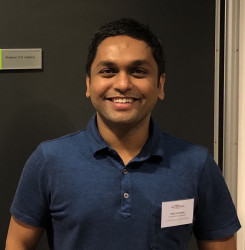
Ishan Srivastava
Who: Ishan Srivastava
When: July 11, 11 a.m. - 12 p.m.
Where: B59-3101
Abstract: Granular materials are prevalent in everyday life, but modeling them has been historically challenging. This is especially important since they are of enormous technological and natural importance; in fact, they are the second most-widely used material in the industry after water. Although one can track the position of every particle with a discrete simulation method, this approach quickly becomes intractable in realistic systems with very large (>10^9) number of particles. As such, continuum models are highly desirable, but developing them is challenging since granular materials exhibit uniquely unusual behaviors: they can behave like a solid, fluid and ‘gas’ all in the same domain, and even their ‘fluid’-like states exhibit complex rheology. Treating all these challenges in a modeling framework with predictive capabilities requires a family of techniques aimed at ‘upscaling’ particle-scale models towards continuum mechanical modeling. In this talk, I will describe our efforts at utilizing discrete simulation methods to develop higher-order tensorial continuum models that can reliably predict their complex fluid phenomena in real-world applications. Along the way, new insights that were gained into the physics of these materials such as stochastic fluid-solid transitions, normal stress effects, and geometry-dependent mechanics will be discussed. Lastly, this talk will close with our proposed efforts on encapsulating a large set of such effects using data-driven multiscale methods that could potentially capture the best of both particle and continuum worlds.
Bio: Ishan Srivastava is a Research Scientist in the AMCR Division at Berkeley Lab. He graduated with a BS (honours) in Mechanical Engineering from BITS Pilani, India and got his PhD in Mechanical Engineering from Purdue University. His PhD dissertation studied the effect of particle shape on the physics of jamming using discrete simulation methods. Subsequently, he conducted postdoctoral research at Berkeley Lab and Sandia National Laboratories where he investigated the mechanics of soft matter, and developed numerical methods for the fluctuating hydrodynamics of complex fluids. His current research aims to develop numerical methods for simulating industrially-important granular materials, multiphase fluids and complex fluids, with motivating applications in advanced manufacturing of energy materials and energy-efficient industrial processing of powders and suspensions.
Literature Surveys and Reviews: Where do we stand?
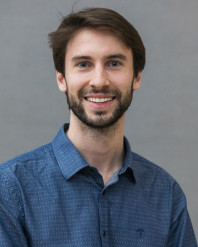
Jean Luca Bez
Who: Jean Luca Bez
When: July 13, 11 a.m. - 12 p.m.
Where: B59-3101
Abstract: Newton himself once stated: "If I have seen further, it is by standing on the shoulders of Giants." The research we conduct always builds upon previous contributions seeking to create something new and valuable to society. Its usefulness is measured in comparison with earlier research in the area. Navigating the myriad of research papers from journals to conferences can be daunting. In this talk, we will cover some strategies and tips for surveying the existing literature to build new contributions and comparing your work with what other researchers are proposing.
Bio: Jean Luca is a Career-Track Data Management Research Scientist at Lawrence Berkeley National Laboratory (LBNL), USA. He is passionate about High-Performance I/O, Parallel I/O, Education, and Competitive Programming. His research focuses on optimizing the I/O performance of scientific applications by exploring access patterns, automatic tuning, and reconfiguration using machine learning techniques, I/O forwarding, I/O scheduling, and novel storage solutions.
Engineering Self-driving Networks

Mariam Kiran
Who: Mariam Kiran
When: July 18, 11 a.m. – 12 p.m.
Where: B59-3101
Abstract: The pandemic and ongoing data challenges have highlighted the need for reliable network connectivity, but upgrading these systems is not only expensive but complex due to the many vendors involved. In my work, I've been exploring how deep learning methods that allow large data sets and train simple neural networks on these data sets, can be used to perform classification and reinforcement learning to help control and optimize the network for large-scale science transfers and give them optimal performance. In my talk I will describe the challenges faced in understanding and deploying AI models, and also how to interface these with real-world network systems paving the future for future research challenges in digital twins and self-driving infrastructures.
Bio: Dr. Kiran is a Computer Scientist in the Scientific Networking Division, Lawrence Berkeley National Laboratory. She currently leads the AI for networking research group building solutions for operational network research and engineering problems. She received her Ph.D. and MSc (Eng) in Computer Science from the University of Sheffield, UK, in 2011 and 2009, respectively. Before joining Berkeley Lab in 2016, Kiran worked at the Universities of Sheffield, Leeds, Oxford, and University College London with collaborations with European industries such as SAP, ATOS, and BT. Her research explores machine learning and decentralized optimization for wide area networks, wireless, and Cloud infrastructures, needed for building 'self-driving networks'. She also helped develop FLAME, an open-source agent-based platform, currently used worldwide for complexity research. Her notable awards include the Royal Society Scientist in Westminster in 2015, the 2017 U.S. DOE Early Career Award, and ACM's N2Women Rising Stars in Networking Award in 2021. She is an active member of ACM and a Senior Member of IEEE communities.
Scientific-driven Neural Networks for Modeling Dynamical Systems

Ben Erichson
Who: Ben Erichson
When: July 20, 11 a.m. - 12 p.m.
Where: B50 Auditorium
Abstract: Deep learning has become increasingly popular in various scientific and engineering fields. However, most existing neural networks are primarily designed for computer vision and natural language processing, leaving them inadequate for modeling complex dynamical systems. Scientific-driven neural networks offer a new paradigm for machine learning that leverages domain knowledge and scientific principles to improve model performance and interoperability.
In this talk, I will provide an overview of scientific-driven neural networks. To demonstrate the benefits of this approach, I will present two recurrent models that use a suitable time-discretization of (i) a set of coupled multiscale ordinary differential equations, and (ii) time-delayed delay differential equations to model dynamical systems. These models capture relevant dynamics more effectively, leading to more accurate and robust predictions.
Bio: Ben Erichson is a senior research scientist at the International Computer Science Institute (ICSI), and a project scientist in Computing Sciences at Lawrence Berkeley National Laboratory. His research focuses on the intersection of deep learning and dynamical systems, with the aim of developing more robust neural network architectures for scientific learning. Prior to his current positions, he was a tenure-track Assistant Professor of Artificial Intelligence and Data-driven Modeling in the School of Engineering at the University of Pittsburgh. He also completed postdoctoral research in the Department of Statistics at UC Berkeley, working with Michael Mahoney, and in the Department of Applied Mathematics at the University of Washington working with Nathan Kutz and Steven Brunton. Ben earned his PhD in Statistics from the University of St Andrews in December 2017.
Extreme Weather in a Changing Climate
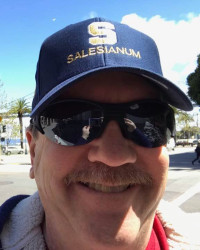
Michael Wehner
Who: Michael Wehner
When: July 25, 11 a.m. - 12 p.m.
Where: B59-3101
Abstract: As the global climate warms due to human changes in the composition of the atmosphere, the local weather changes too. Of particular interest are extreme weather events such as heat waves, floods, droughts, hurricanes and other intense storms.
The science of detection and attribution quantifies the human influence on long term climate change. Extreme event attribution quantifies the human influence on particular extreme weather events. I will illustrate the state of the technology by examining the 2021 heat wave in the Pacific Northwest and Hurricane Harvey which flooded much of Houston in 2017.
Bio: Michael F. Wehner is a senior scientist in the Computational Research Division at the Lawrence Berkeley National Laboratory. Dr. Wehner’s current research concerns the behavior of extreme weather events in a changing climate, especially heat waves, intense precipitation, drought and tropical cyclones. Before joining the Berkeley Lab in 2002, Wehner was an analyst at the Lawrence Livermore National Laboratory in the Program for Climate Modeling Diagnosis and Intercomparison. He is the author or co-author of over 250 scientific papers and reports. He was a lead author for the 2013 Fifth and 2021 Sixth Assessment Report of the Intergovernmental Panel on Climate Change and the 2nd,3rd and 4th US National Climate Assessments. He is currently a lead author on the 5th US National Climate Assessment. Dr. Wehner earned his master’s degree and Ph.D. in nuclear engineering from the University of Wisconsin-Madison, and his bachelor’s degree in Physics from the University of Delaware. He received the 2022 LBNL Director's Award for Exceptional Scientific Achievement and was named a Clarivate Highly Cited Researcher in 2020, 2021 and 2022.
Modeling Antarctic Ice with Adaptive Mesh Refinement
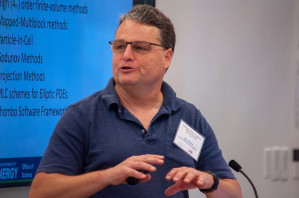
Dan Martin
Who: Dan Martin
When: July 27, 11 a.m. – 12 p.m.
Where: B59-3101
Abstract: In this talk, I will provide an overview of scientific-driven neural networks. To demonstrate the benefits of this approach, I will present two recurrent models that use a suitable time-discretization of (i) a set of coupled multiscale ordinary differential equations, and (ii) time-delayed delay differential equations to model dynamical systems. These models capture relevant dynamics more effectively, leading to more accurate and robust predictions.
Bio: Dan Martin is a computational scientist and group leader for the Applied Numerical Algorithms Group at Lawrence Berkeley National Laboratory. After earning his Ph.D. in mechanical engineering from U.C. Berkeley, Dan joined ANAG and Berkeley Lab as a post-doc in 1998. He has published in a broad range of application areas including projection methods for incompressible flow, adaptive methods for MHD, phase-field dynamics in materials, and Ice sheet modeling. His research involves the development of algorithms and software for solving systems of PDEs using adaptive mesh refinement (AMR) finite volume schemes, high (4th)-order finite volume schemes for conservation laws on mapped meshes, and Chombo development and support. Current applications of interest are developing the BISICLES AMR ice sheet model as a part of the SCIDAC-funded ProSPect application partnership, and some development work related to the COGENT gyrokinetic modeling code, which is being developed in partnership with Lawrence Livermore National Laboratory as a part of the Edge Simulation Laboratory (ESL) collaboration.
Scientific Applications in the NESAP Program
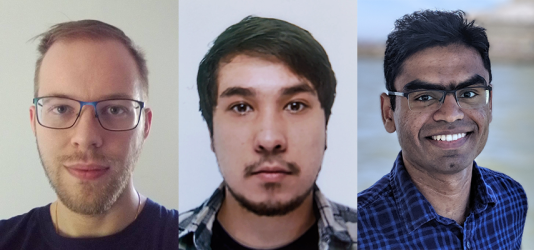
(L-R) Speakers Nestor Demeure, Vinicius Mikuni, and Shashank Subramarian
Who: Nestor Demeure, Vinicius Mikuni, and Shashank Subramanian
When: August 1, 11 a.m. – 12 p.m.
Where: B59-3101
Abstract: NERSC Exascale Scientific Application Program started in 2014 and has been forming collaborations with application development teams and vendors in preparing scientific applications for the current and upcoming architectures. These collaborations involve NERSC staff taking deep dives into the application codes and engineering them to give optimal performance on NERSC and other systems. In this presentation NERSC engineers will give an overview of their collaborations with four science teams and provide an insight into efforts involved in adapting their applications to take advantage of the next generation of supercomputing architectures. The presentation will cover optimization and development efforts for applications in Cosmology, machine learning in High Energy Physics, and large-scale neural network surrogates for weather and climate simulations.
Nestor Demeure Bio: I am a Ph.D. and engineer specializing in computer science and applied mathematics. I did my Ph.D. on the measure and localization of numerical errors due to floating-point arithmetic in a high-performance computing context. I am currently working with NERSC to help port the TOAST software framework (used to study the cosmic microwave background) to the new Perlmutter supercomputer and, in particular, port it to graphic processors (GPU).
Vinicius Mikuni Bio: Vinicius Mikuni is a NESAP for Learning Postdoctoral Fellow at NERSC. His current research focuses on machine learning development and application for experimental High Energy Physics, including Likelihood-free deep learning for detector simulation, unfolding, and anomaly detection on the search for new physics processes. He received his PhD in 2021 from the University of Zurich, measuring the production cross section of top quark pairs in association to b quarks and the search for new physics in signatures involving third generation fermions using the data collected by the CMS Collaboration.
Shashank Subramanian Bio: Shashank Subramanian is a deep learning engineer with research interests in the intersection of high-performance scientific computing, deep learning, and physical sciences. His current research involves developing large-scale neural network surrogates for high resolution, data-driven weather and climate simulations and on algorithmic developments to understand and improve physics-based neural operators. Prior to joining NERSC, Shashank received his PhD in Computational Sciences and Applied Mathematics from UT Austin in 2021. His doctoral research focused on integrating mathematical models of cancer growth with patient-specific imaging data using efficient parallel algorithms, optimization methods, and high-performance computing software to improve personalized medicine. Shashank received his Bachelors in Aerospace Engineering from the Indian Institute of Technology Madras in 2016.
Behavioral-Based Interviewing Workshop: Effective Interviewing Techniques

Bill Cannan and Nicolette Carroll
Who: Bill Cannan & Nicolette Carroll
When: August 3, 11 a.m. – 12 p.m.
Where: B59-3101
Abstract: Past Behavior is the best predictor of future performance! Behavioral-based interviewing is a competency-based interviewing technique in which employers evaluate a candidate's past behavior in different situations in order to predict their future performance. This technique is the new norm for academic and industry-based organizations searching for talent. This workshop will provide information and tools to help you prepare for your next interview including an overview of the behavioral-based interview process, sample questions, and techniques on how to prepare.
Bio: Bill Cannan is the Sr. HR Division Partner that supports Computing Sciences and IT. Bill has over 20 years of HR related experience as a recruiter and HR Generalist in both industry and National Lab environments. This includes over 12 years at Berkeley Lab and three years with Lawrence Livermore National Lab. Bill is responsible for providing both strategic and hands-on full cycle Human Resources support and consultation to employees and managers.
Bio: Nicolette Carroll is a Staff HR Division Partner that supports Computing Sciences and IT.
Summer Program Poster Session
Who: All Summer Program Participants are Welcome to Attend
When: August 8, Time TBA
Where: B59, Room/Location TBA







 Instagram
Instagram YouTube
YouTube